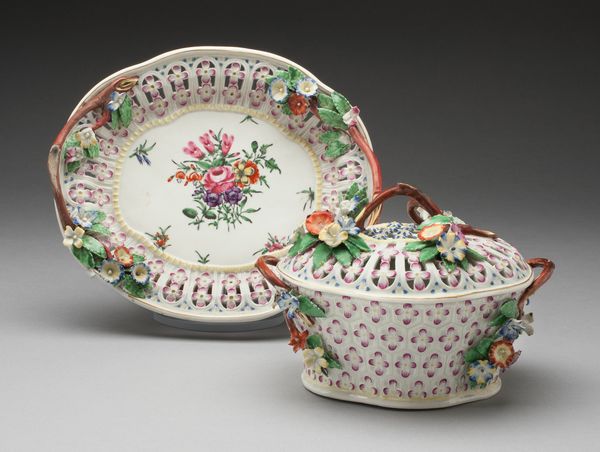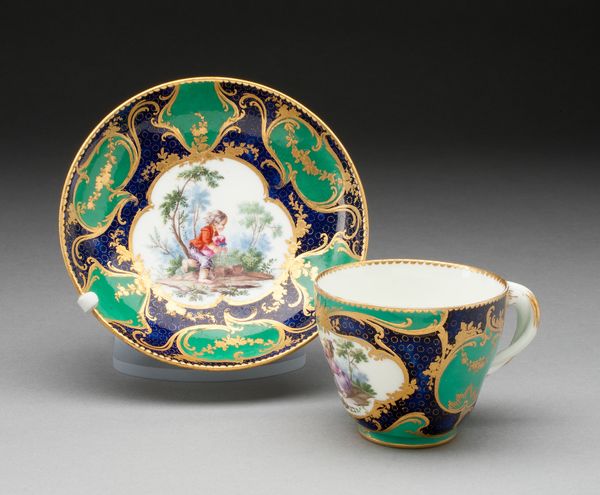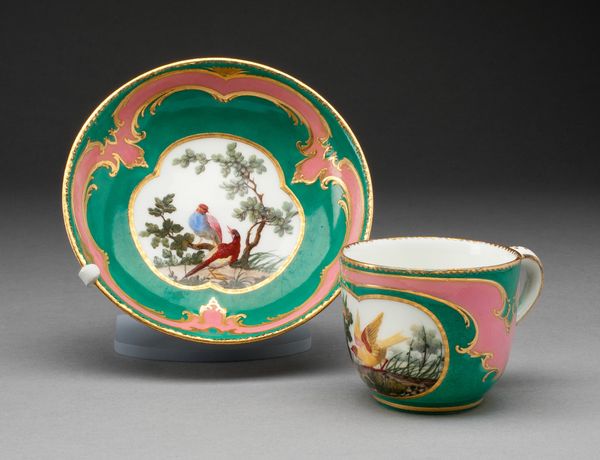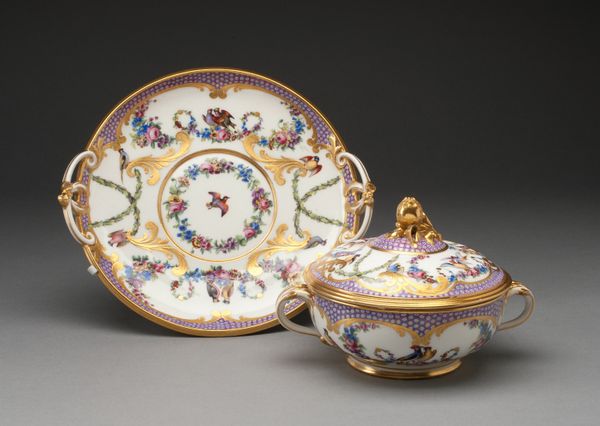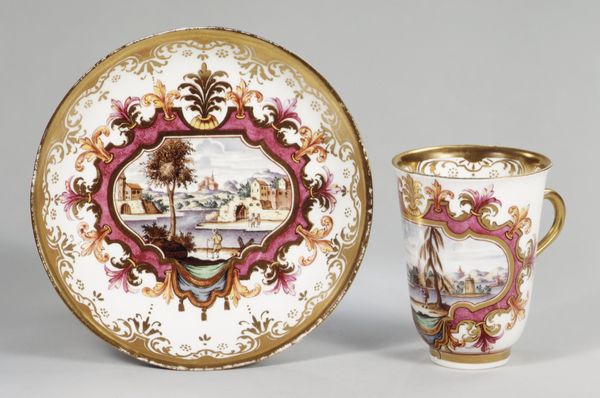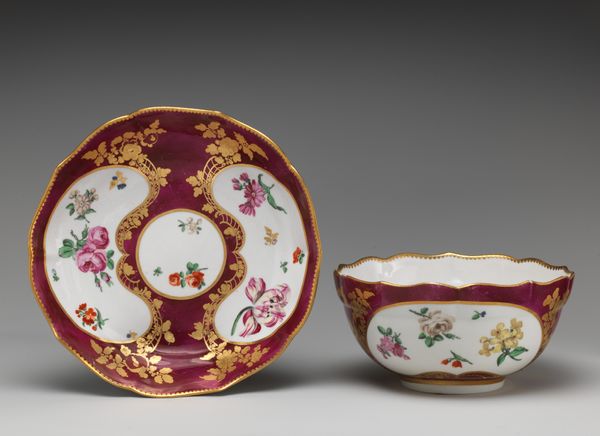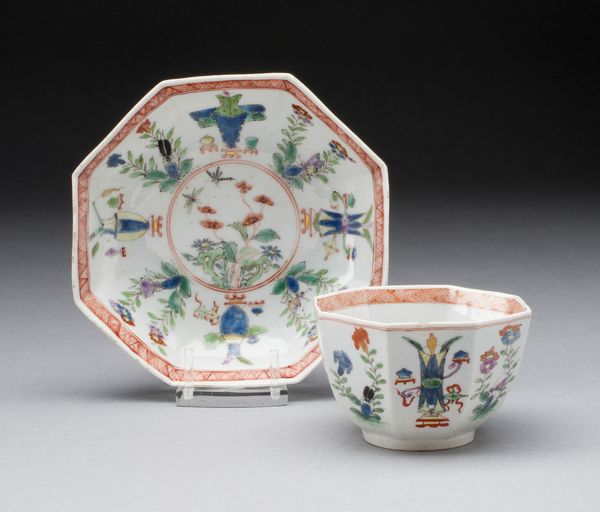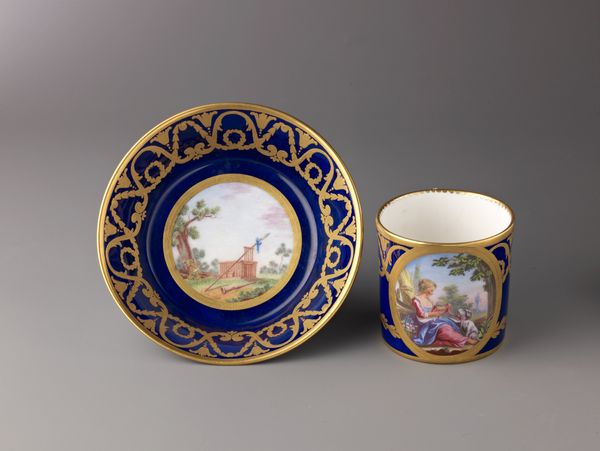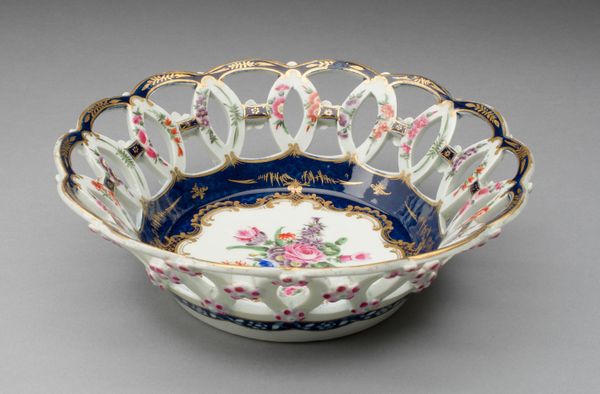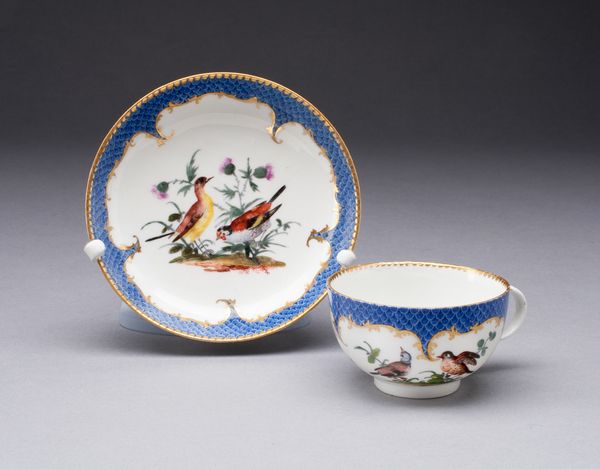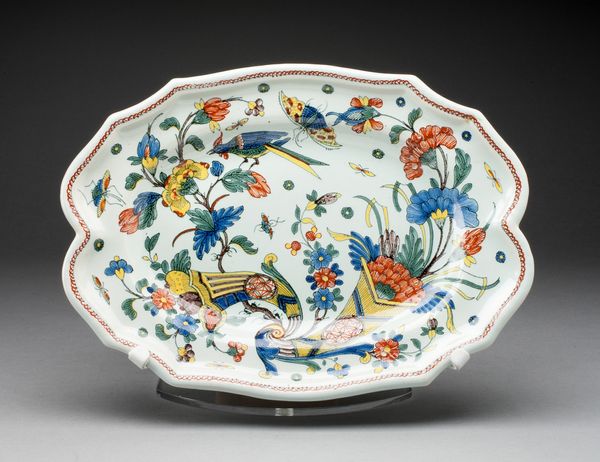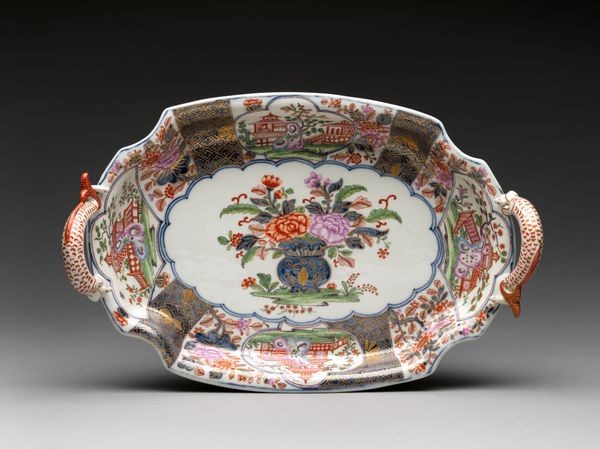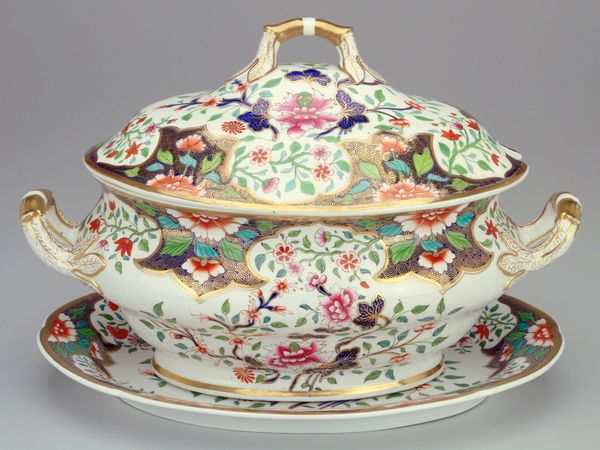
ceramic, porcelain
#
ceramic
#
porcelain
#
ceramic
#
decorative-art
#
rococo
Dimensions: 12.7 × 21 × 16.5 cm (5 × 8 1/4 × 6 1/2 in.)
Copyright: Public Domain
Editor: So, this is a Tureen and Stand, made around 1770 by the Worcester Royal Porcelain Company. The use of porcelain is incredible! It makes me wonder, what kind of a status symbol was it back then, and how were these objects actually used and by whom? Curator: Exactly. Consider the raw materials: Kaolin, petuntse, the energy needed for the kilns – these represent significant resources and labor. This wasn't just a pretty object; it was a concentrated display of wealth. The deep cobalt blue alone, a costly pigment to produce, speaks volumes. Editor: So, not your everyday soup bowl then! What does the Rococo style of decoration reveal to you about the intended consumer or their social circles? Curator: Rococo is all about conspicuous consumption! Notice the asymmetrical designs, the idealized nature scenes… these are not accidental. These stylistic trends of Rococo had patrons willing to display these extravagant goods in their homes. Can we then even see these types of artforms as instruments of display and statements of control and dominance? Editor: Definitely makes you think differently about decorative arts when you start to consider labor. So, this was effectively Rococo propaganda of status through dinnerware? Curator: In a way, yes. The very existence of these pieces depended on exploiting both natural resources and skilled labor. They are beautiful, certainly, but also physical evidence of complex economic and social relationships of that time. Editor: Thanks, that’s a compelling perspective on something I would otherwise consider just ornamental. Curator: Absolutely. By examining the materials and means of production, we uncover a more complex narrative beyond the object's mere aesthetic appeal.
Comments
No comments
Be the first to comment and join the conversation on the ultimate creative platform.
